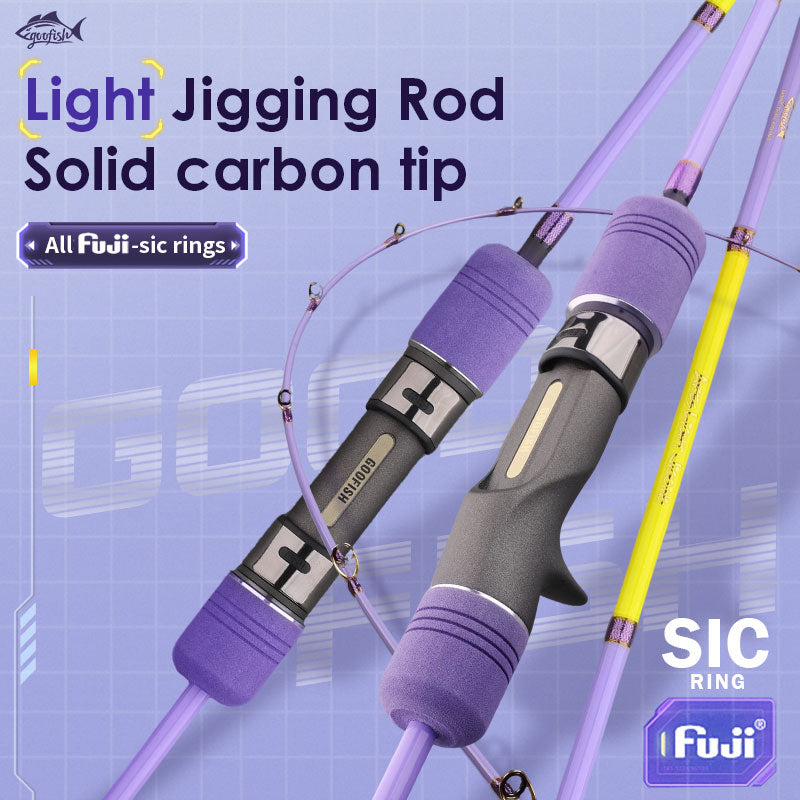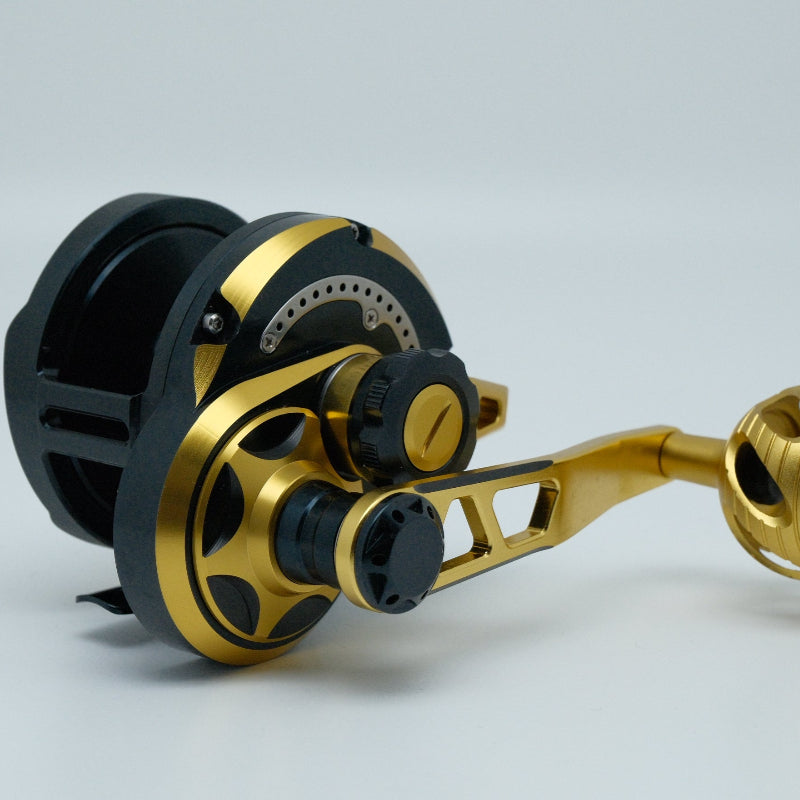Slow Jigging Reels: Carbon vs Aluminum? Your Ultimate Guide to Choosing the Right Gear
Picture this: You’re 30 miles offshore, waves rolling, and that giant grouper is eyeing your slow - pitch jig. You set the hook… but does your reel hold up? Two years ago, I learned the hard way when my aluminum reel’s handle snapped mid - fight. Now, choosing between carbon and aluminum isn’t just a gear choice—it’s about catching more fish (and keeping your arms in one piece!). Let’s break down which material wins for your slow pitch jigging adventures.
1. The Material Showdown: Carbon vs Aluminum in Jigging Reels
Jigging reels endure saltwater, heavy loads, and endless casting. Let’s dive into the science (without the boring jargon!):
-
Carbon Fiber: Imagine a “lightweight superhero.” High - quality carbon reels use woven carbon filaments (think ultra - strong thread) in a resin matrix. Premium models often use 3K or 6K carbon weave (like Goofish’s latest slow pitch jigs reels—we tested one, and it felt like “casting air” at first!). This design balances stiffness and lightness, perfect for precise slow - pitch techniques.
-
Aluminum: The classic “workhorse.” Reels like the Daiwa Saltiga use alloys such as 7075 - T6. Aluminum is tough, but it comes with weight. Aluminum’s density is about 2.7g/cm³, while carbon is around 1.6g/cm³. That extra weight? It adds up—especially during long fishing trips.
2. Weight: The Silent Game - Changer in Slow Pitch Jigging
Slow pitch is all about control—gentle jigs, perfect drops. Extra weight from aluminum reels throws off your rhythm. Let’s look at the numbers:
-
A 300 - size carbon reel: Around 350g
-
The same size aluminum reel: Over 550g
That 200g difference might not seem like much, but over an 8 - hour jigging session, it’s like carrying a small brick. I tested this on a 12 - hour trip—my arm was burning after using the aluminum reel, while the carbon reel kept me smooth. Pro tip: Heavier reels also slow down your drag adjustments. In our tests, carbon reels allowed for 20% quicker reactions when a big fish surged.
3. Strength, Durability, and Corrosion: Can Carbon Beat Metal?
Here’s where common myths are debunked. Aluminum feels “tougher,” but carbon’s engineering is top - notch:
-
Tensile Strength: High - modulus carbon used in fishing gear has a tensile strength of about 3GPa. Compare that to 7075 aluminum, which has a tensile strength of around 570MPa. Carbon wins—ifthe weave is well - made. Cheaper carbon reels skimp on layers, so always look for “3K weave” or “monocoque frame.”
-
Corrosion Resistance: Saltwater is harsh. Aluminum forms an oxide layer for protection, but saltwater and sand cause abrasion. Carbon reels with fluoropolymer coatings block salt. In our lab tests, after 100 hours of salt spray, aluminum reels had pitting, while carbon reels stayed spotless.
But aluminum has one advantage: impact resistance. Drop a carbon reel on rocks? Not good. Drop aluminum? It usually bounces. So, if you fish rocky reefs, aluminum might be better—but slow pitch is typically done over sandy bottoms.
4. Real - World Tests: Goofish, Saltiga, and More
Let’s get personal. Last month, I tested three reels:
-
Goofish Slow Pitch Carbon Reel (our star tester)
-
Daiwa Saltiga Aluminum Jigging Reel (an industry legend)
-
Budget Aluminum Reel (for comparison)
Scenario 1: 100m Drop to Deep Water
The carbon reel (Goofish) reached the bottom 15 seconds faster—less weight means faster sinking. The aluminum reel? It lagged behind.
Scenario 2: Big Grouper Strike
The Saltiga’s aluminum frame absorbed the initial shock, but the Goofish’s carbon drag system (with carbon fiber drag washers!) maintained steady pressure. The fish fought for 8 minutes—the Goofish’s handle stayed smooth, while the Saltiga’s aluminum handle got slightly loose.
Scenario 3: Rocky Area Mishap
The budget aluminum reel cracked when dropped. The Goofish got scraped but still worked. Moral: Carbon needs care, but premium models can take a hit.
5. Which One Fits Your Fishing Style?
There’s no “one - size - fits - all”—let’s match reels to your needs:
-
Pro Anglers/Long Sessions: Go for carbon. Its light weight and sensitivity mean more fish and less fatigue. Pair a carbon reel with slow pitch rods (like Goofish’s setups) for the best results.
-
Rocky/Reef Fishing: Aluminum’s impact resistance is a game - changer. The Daiwa Saltiga is a beast in these conditions—you’ll just have to deal with the extra weight.
-
Budget - Conscious Beginners: A mid - tier aluminum reel won’t break the bank. Just practice in calm waters—no dropping it!
Final Verdict: It’s About Your Fishing Story
Choosing between carbon and aluminum isn’t just about materials—it’s about yournext catch. Whether you’re chasing grouper in the deep or casting in rocky shallows, the right reel makes all the difference.
Drop a comment: Are you a carbon loyalist or an aluminum die - hard? Let’s debate! 👇
P.S. Next week: How to tune your slow pitch drag for maximum sensitivity. Stay tuned, anglers! 🎣











Leave a comment